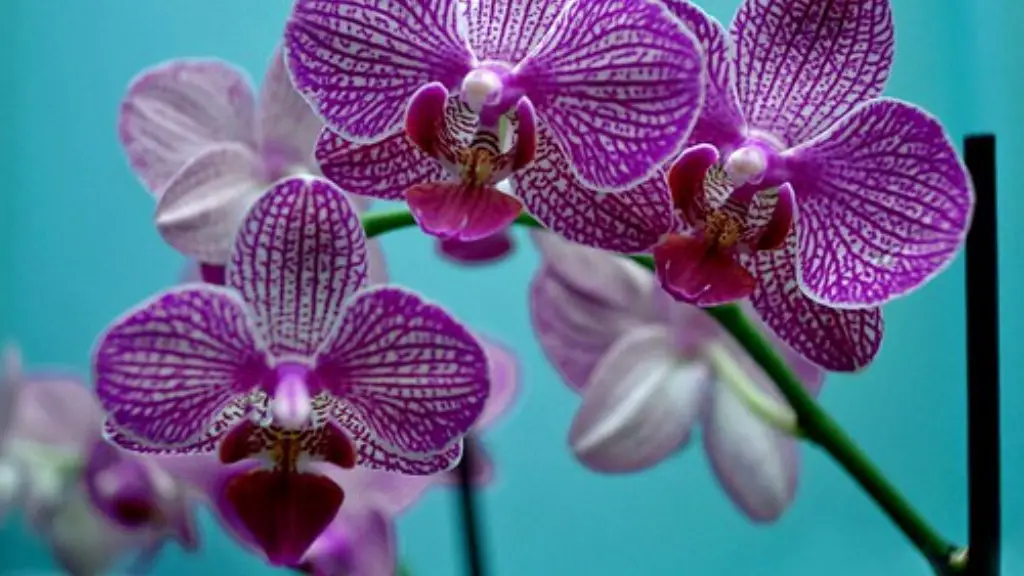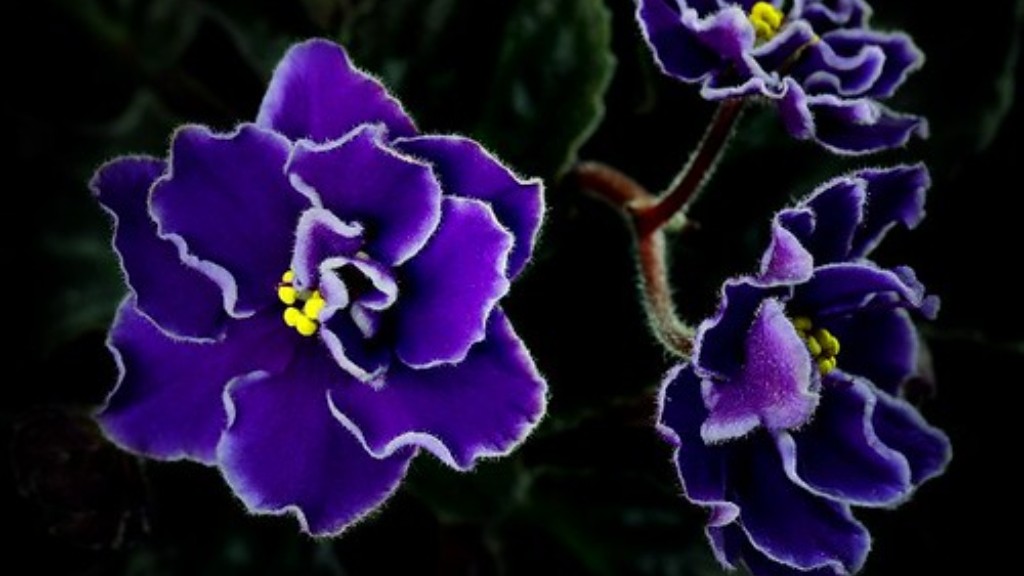If you have an old African violet that is not blooming, you can revive it with a little effort. First, make sure the plant has good drainage. If it is potbound, or if the roots are crowded, replant it in a larger pot. Give it a bright location, but out of direct sunlight. Water it when the soil is dry to the touch and fertilize it monthly with a half-strength solution of a water-soluble fertilizer. You can also try moving it to a warmer location, as African violets prefer temperatures between 70 and 75 degrees Fahrenheit. With a little care, you can get your old African violet blooming again.
1. Start by removing any dead leaves or flowers.
2. Inspect the plant for pests or diseases and treat accordingly.
3. Trim back any overgrown or leggy stems.
4. water the plant thoroughly, but allow the soil to dry out somewhat between waterings.
5. Place the plant in a bright location, but out of direct sunlight.
6. Apply a soluble fertilizer formulated for African violets on a monthly basis.
How do you rejuvenate an old African violet?
If you have to repot your violet, try to do so more often to avoid having to cut a large amount of the root ball away. Cut off the bottom of the root ball, cutting as much off the root ball as the neck is long. Repot your violet covering the scraped neck with potting medium to the bottom set of leaves. That scraped neck will grow new roots.
African violets are a beautiful and popular plant, known for their long lifespan. However, it is important to remember that they need to be repotted every few years to keep them healthy and happy. This is because as they grow, their roots start to crowd the pot and they need more room to spread out. Repotting them every few years will help them to stay healthy and vibrant for many years to come.
How do you fix wilted African violets
If you have an African violet that is suffering from root rot, there are a few things you can do to try and save it. First, trim off any dead, droopy, or mushy foliage. These leaves won’t recover; removing them frees up energy for your plant to heal. Next, remove your African violet from its pot and gently brush the soil from the roots. Remove any black or mushy root segments and apply root rot treatment if the damage is severe.
If your plant is wilting, it could be that it needs more water. However, it could also be a sign of overwatering. If your plant is in a plastic pot, it is especially susceptible to overwatering.
Is baking soda good for African violets?
If you have powdery mildew on your African violets and it’s not improving, try spraying the plants lightly with a mixture of 1 teaspoon (5 ml) of baking soda in 1 quart (1 L) of water. You can also spray the air around the plant with Lysol or another household disinfectant, but be careful not to get too much spray on the leaves.
Epsom salts provide an important source of magnesium and sulfur for plants. These minerals are necessary for producing beautiful blooms and healthy foliage. To use, mix one and a half teaspoons of Epsom salts in a quart of tepid water and swirl to dissolve. Water your African violets (below the leaves) with this solution once a month.
Where is the best place to put an African violet?
If you want your plants to have the best color and blooms, grow them in bright, indirect light. An ideal location for a plant stand is three feet away from a west- or south-facing window. Plants will still grow when situated right beside north- or east-facing windows, but leaves will be thin and spindly, and plants less likely to bloom.
If you want your African Violet to bloom again, here are 8 ways to make it happen:
1. Let there be light – African Violets need bright, indirect light in order to bloom. If your plant is not getting enough light, it may stop blooming.
2. Turn up the humidity – African Violets also love humid conditions. You can increase the humidity around your plant by using a humidifier or placing it on a pebble tray.
3. Replenish essential nutrients – African Violets need to be fertilized regularly in order to bloom. Use a fertilizer specifically designed for African Violets and follow the directions on the package.
4. Keep it pleasant – African Violets like to be kept at a consistent temperature. sudden temperature changes can shock the plant and cause it to stop blooming.
5. Choose the right soil – African Violets need a soil that is high in organic matter and drains well. A potting mix specifically for African Violets is a good option.
6. Protect from pests & disease – pests and diseases can wreak havoc on an African Violet and cause it to stop blooming. Be sure to keep an eye
How often do you water an African violet
A wicking system is a great way to make sure your African violets are never over watered. Simply set up the system so that water is only available to the roots of the plant once a week, and allow the plant to completely dry out between waterings. This will help to keep the plant healthy and prevent root rot.
There are a few different ways to get rid of wild violets without harming your grass. One way is to use a broadleaf killer that contains either 2,4-D or Dicamba. These will selectively kill the violets without damaging the grass. Another great option is to use an herbicide called Drive (quinclorac). This will also kill the violets without harming the grass.
Why is my African violet floppy?
If you notice your African violet’s leaves drooping, it is likely due to overwatering. Make sure to check the soil before watering again to ensure it is not too wet.
If your African Violet plant has been over-watered, the soil will retain too much water. This retention of water will cause the leaves and/or leaf stems to turn soft, limp or mushy. The leaves may also begin to yellow or brown. If you think your plant has been over-watered, allow the soil to dry out completely before watering again.
Are coffee grounds good for African violets
Coffee grounds are slightly acidic and contain nitrogen, which helps plants grow healthy foliage. Occasionally sprinkling used coffee grounds on top of your African violet potting soil can be good for the plant.
There are a few things that can cause an African Violet to topple over. One is that the roots are decayed. Another is that the roots have yellow or yellowish-brown stripes on them. Finally, the top part of the plant may separate from the root system entirely. If you notice any of these symptoms, it’s important to check on your plant and see if it needs help.
Do African violets like to be misted?
It is important not to mist the foliage of African violets, as this can cause permanent leaf spotting. Use water that is room temperature, and be careful not to saturate the crown of the plant, as this can lead to crown rot.
Adding hydrogen peroxide to water is a common way to prevent algae growth. This method is effective, but it can also cause problems for plants. The hydrogen peroxide can prevent the plant from soaking up the water, which can lead to problems with the plant’s growth. To resolve this, pour water through the top of the pot to try to get the capillary action going.
Conclusion
Old African violets can be revived by cutting off the dead leaves, watering the plant, and placing it in a warm, sunny location.
African violets are a type of houseplant that is known for being difficult to revive. However, there are a few things you can do to help them bounce back. First, make sure they are getting enough light. They need at least six hours of bright, indirect sunlight per day. Secondly, water them regularly, but be sure not to overwater them. Allow the soil to dry out slightly between waterings. Lastly, feed them a high-quality African violet fertilizer every two weeks. With a little love and care, your African violets will be blooming in no time!





